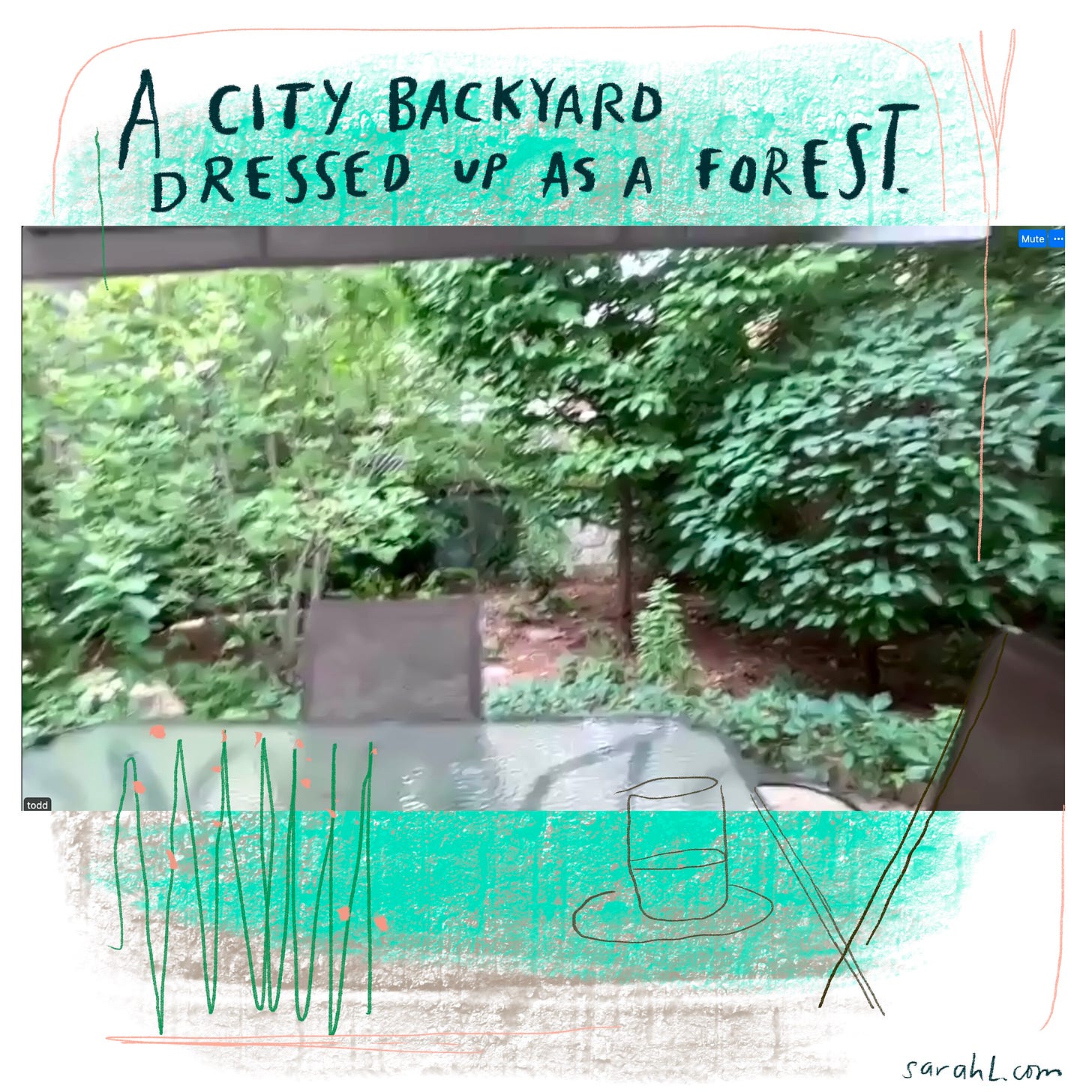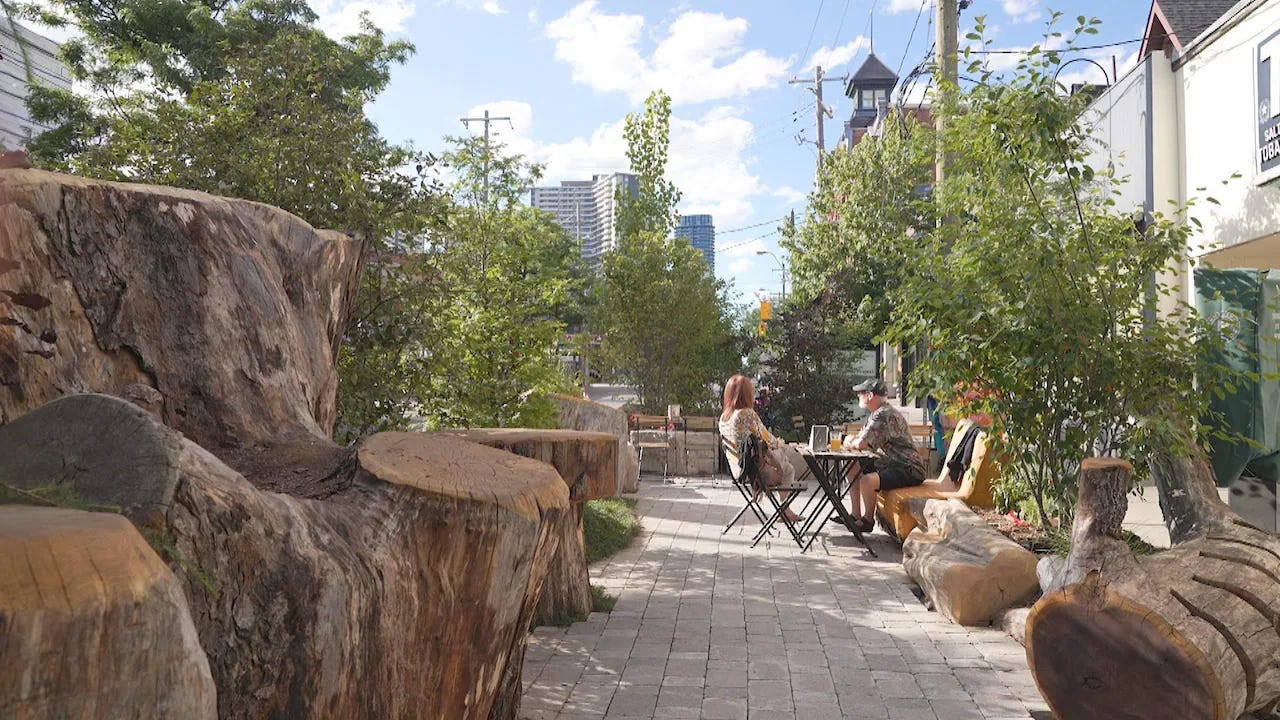Opinion
Planting for the Planet

Things I used to think were the answers to everything: Smitten Kitchen , Nicole Holofcener movies, trees. It seems weird that I no longer consider trees an absolute solve for all that ails, but that is the price of growing old and cynical. It’s not that trees aren’t beautiful, wonderful, essential leavers (sorry not sorry) in our climate fight. It’s just that when , you know the narrative has lost some nuance and the truth has been obscured.
We can’t drone bomb seedlings fast enough to meet the expectations the world has set for trees, the poor saps. We also can’t guarantee that carbon will be sequestered permanently—as we warm the planet, trees are burning more and more. There is simply no way we can be assured that the trees we plant will remain alive, sequestering carbon with the longevity of a redwood and the impregnability of a bank safe. This decade’s commitments become the next decade’s subdivision. OF COURSE, trees are still a key solution. Just not the solution. And our fetishization of faraway forest mega-planting overshadows discussions of where trees can and must do all the things right away: cities.
One of the best minds on how to think about trees in cities is my friend Todd Irvine, an and writer (). I met Todd in the early aughts. He led through the then-just-barely-gentrified streets of West End Toronto. At one point, he scaled a billboard and flicked off the lights (I think they’ve since locked the switches), the uninspired ad disappearing into darkness. It was a perfect moment. As a third-rate flâneuse and bargain basement Kertész, my high street adventures paled in comparison with Todd’s and another friend’s, Shawn’s, urban explorations. I realized I had so much more of the city to see. I’d barely noticed the soil, the trees, the topography of Toronto. I only saw people. And coffee shops.
Todd’s been seeing soil for decades and has unearthed some brilliance accordingly. I asked him a lot of nosy questions. Here goes.
Talk to me about planting trees. Yay, nay, what should I know?
My whole thing is trees in cities. With cities, it’s not so much that trees sequester carbon. It’s that they cool the city. But then, as a result, we use less AC, and then less fossil fuels, so there is a direct link between more trees and less fossil fuels.
If you had to protect your city as fast as you could, trees would do that, because not only is it the cooling, but they’re pulling water out of the ground all day. Trees are constantly pumping water, so that means we have a canopy overhead, but it’s also full of water. The sun has to pass through this canopy. It’s like a parasol. Evapotranspiration is so great.
What now?
EVAPOTRANSPIRATION! (Sarah looks it up. It is great. Imagine the mist from a rainforest.)
A random thing Todd said that is absolutely true and sort of breaks up the flow of this interview, but needs to go right here:
I often joke that schools are how you would design something if you wanted to bake children alive. Red brick walls, tar asphalt, no air conditioning, south-facing windows, concrete.
I love the city’s free tree program, but I don’t know how to suggest to neighbors that they should plant a tree.
My view is we have to get away from the idea that it’s a free tree program. Your front lawn, it’s 100% city property. If you look at your survey, your property probably ends; it’s much further back than people realize. In some municipalities, they will plant a tree in front of every house. It should be the default.
Default to trees!
Yes. The city should be much more proactive. If we are in a climate emergency and we really want to green up our cities, let’s just start driving trucks down streets with 100 trees in them and start planting them. Maybe you come by a week before with a flyer letting people know.
People might lose their minds.
People would definitely lose their minds. But we should do it.

What do you think of ?
Few things make me happier than seeing asphalt come up. A few weeks ago, I had a friend on Dufferin (a busy street in Toronto) and she had a beautiful magnolia surrounded by interlocking that we took out. Everything is blooming now. It’s the tiniest little space, and she has butterflies coming now. That’s so possible. The change was profound. We did this six weeks ago and probably spent six hours in total. She sent it to me this morning. ()
I like this more than planting trees. Trees are great and they should be planted, but what makes me happier is knowing I am giving them a nourishing place to grow.

It’s so important, because as we pave over everything, we’re losing all our ground permeability.
People are making a second living room outside (in their backyards). I see the appeal of that, but they are more or less going edge to edge. Maybe they leave a little strip on the edge to plant three cedars from Home Depot that will die in six months.
The first goal should be to have trees and shrubs reach maturity, versus pizza oven and waterfall first, and then two shrubs in the corner that are tiny triangles.
It’s easy to do some of these things, but there has to be the will. (Todd’s backyard is a beautiful baby forest, and there’s still plenty of room for a sitting area.)

Hardly anyone talks about the tree canopy anymore. How are we doing as a city? (Sarah and Todd disparage Mayor Milquetoast for seven minutes and get it out of their systems. Mostly).
Did you know that Cabbagetown and it was so beautiful? It’s mind-blowing, it’s staggering as to how much they changed the streetscape.
I’m always quibbling about things, saying this was good, but I wish they hadn’t done this. But this is absolutely perfect. I would not change one thing. We’re sitting on this giant upturned log that was a table having a beer and it was just… perfect. (Toronto readers, go!)


The re-naturalization of the Don River is absolutely extraordinary. There’s this guy named who drives the bulldozer, and he just takes pics every other day of what he’s working on. So right now, there’s this big area where the water turns, and they’re building an island, a hump in the middle of the water that no human can ever get to, just so these birds and mammals can have it. That’s a giant scale. And we’re doing it. So if we can do this at that scale, we can absolutely take out five or six parking spots on every street and make a park. We have great minds and designers, we have so many people who are conscious of what needs to be done, and we can unleash it.
Yes!!!!

Thank you so much, terrific Todd! ()
This Week: Tree Lines
Your pleas for the trees, please. Tell me things!
Last Week:
Writes C:
This week I was extra pumped to piece together that we might be neighbours! We’re moving and you are just a block away!
We hope to be there for a long time, and I’ve been curious and hopeful that I’ll be able to find a community there that I’ve been craving for a while — both in terms of just convenient friends on the street for us and our kids, but also in terms of environmental efforts.
I went to a fantastic Jane’s Walk this year in Harbord Village about improving the native tree canopy, and the baby oak nurseries on Palmerston that residents have planted in their front yards. I walked away thinking that I could easily start the same on Crawford. And maybe make some good new neighbour friends in the process!
We’re about to embark on a big reno to eco-fy our home before we move in. The struggles are indeed real about the limited pool of experts and resources to do it easily (apparently insulating old brick homes is more complicated than standard practice if you don’t want the brick to eventually fall apart). Your interview with Tim was super helpful — we are deep in the planning and talking to anyone who knows anything phase! We will definitely reach out.
Hooray! Welcome, and I can’t wait to tree talk with you, C!
Writes N:
IDK about this email. You seem to be conflating seeing how things could be better with nostalgia for some imagined past. That seems kind of contradictory. A complaint is just something that someone doesn’t want to hear. For some of us we see how things can be better, not just for ourselves but for everyone. I know it is on trend to revere some parts of the past, which is actually kind of ironic, but I’m not sure that is the path forward.
Fair! I’ve been trying to be more personal/storyteller-y in these here newsletters, for a number of reasons, but often, I’m just a melancholy midlifer trying to sort out random fragments in my own brain. This was an admittedly unfocused one! I definitely don’t want to romanticize the past or conflate. I hate CONFLATING. Almost as much as I hate climate deniers and smooth jazz. So thank you!
Stuff
- ! From lovely Kat and the Rewilding Magazine crew.
- CBC. Valuing trees. Whether you believe in putting a price on nature or not, some interesting ideas.
- Thanks, Jenn, for this recommendation (when I am not writing this newsletter, I am pretending to write an update of The Monkey Wrench Gang, so I’m excited to listen to this): “.”
On setbacks
While finishing this newsletter, I read the grim news that Joe Manchin had decided not to support any climate investments in reconciliation. It’s an absolutely huge setback, no getting around it. It knocked the air out of me, even though I had been texting with a colleague who had insisted the writing was on the wall all day. I can just never believe the worst will materialize. I felt and feel angry at a garbage structure that allows one person to decide the fate of millions of people, and with no exaggeration, a planet. But on we must. There really is no other option.
This doesn’t mean ignoring or suppressing the pain and frustration. I’d just gotten back from a run, so I couldn’t run the frustration out again (well, I probably could have). Do what you need to do to stay strong, because going forward is too important. If you are me, this means eating fresh peas while drinking a glass of white wine under a perfect summer sun this weekend. Hope you are OK!
(Also, making one of these and going paddleboarding with friends. Suggest you do this too.)
The Snackle Box
— WidebandGapfiller (@WidebandMaid)
People Dancing
Thank you so much for reading. I hope you are taking care of yourself and the people you love. Wishing you a restorative weekend full of truffle chips and sunshine (if you go in for those things).
Sarah
P.S. This is my newsletter for the week of July 22, 2022, published in partnership with �����! Media. You can sign up to get Minimum Viable Planet newsletter emailed directly to you at .

|
Sarah Lazarovic
is an award-winning artist, creative director, freelance animator and filmmaker, and journalist, covering news and cultural events in comic form. She is the author of A Bunch of Pretty Things I Did Not Buy.
|






